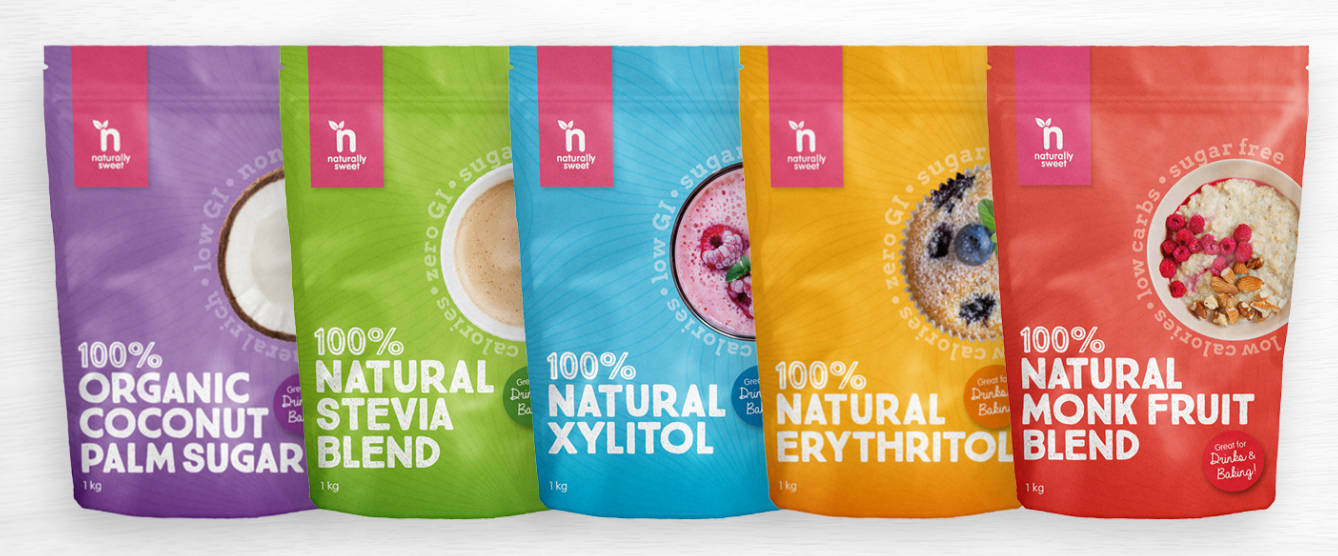The sweet alternative offers many dental benefits by Susan Clark, RDHEF
Although dental decay is largely preventable, it is still considered the most common chronic infectious disease of children ages 5-17. It is impossible to completely avoid sugar in our diets, so a more realistic approach would be to limit the amount of sugar we ingest to maintain good oral health and start incorporating xylitol into our diet. The average American consumes about 31 teaspoons of sugar per day, which amounts to 496 calories or 20% of their caloric intake. Humans were not designed to eat large amounts of sugar, although we do it every day. These sugary foods adhere to our teeth, stimulate plaque growth, and promote tooth decay. Sugar depletes the body of important vitamins and minerals, raises blood pressure, triglycerides and the bad cholesterol, and increases the risk of heart disease, diabetes, and obesity in both children and adults. Xylitol is a five-carbon sugar alcohol compound. Sugar alcohols are neither sugar nor alcohol. They are carbohydrates that resemble sugar, but without the harmful effects of sugar. They can occur naturally in plants or can be manufactured from sugar and starches. Xylitol is not an artificial sweetener, but a crystalline carbohydrate which looks very much like sugar. It is a natural dental antidote for sugar. It can be derived from fibrous parts of plants, vegetables, and berry-type fruits such as strawberries and raspberries. These naturally sweetened fruits give all the taste benefits of sugar without its many drawbacks. Unfortunately, we cannot eat enough of these foods to obtain sufficient amounts of xylitol to create effective dental benefits. That is why food scientists continue researching to find alternative xylitol delivery systems that will be appealing to the taste while promoting dental benefits. Xylitol is a normal part of everyday human metabolism. Our bodies make up to five to 10 grams per day in the metabolism of carbohydrates. Unfortunately, this process occurs in the gut, so it does not deliver any oral benefits. Since our bodies produce xylitol and the enzymes to break it down, there is no chance for any adverse reaction from eating products containing xylitol. Frequency is really more important than the amount consumed. Children can usually tolerate up to 45 grams per day and adults 150 to 200 grams per day. Since there are always harmful bacteria in our mouths, xylitol is most effective if consumed throughout the day. If eaten only occasionally, it may not be as effective, regardless of the quantity consumed at that exposure time. Advocates of xylitol like to say "strive for five" exposures of xylitol every day. These exposures should be divided into several doses throughout the day in the form of toothpaste, mouthwash, candies, mints, and chewing gum. Today, the most common source of xylitol is from corn cob and corn stalk. You may have heard that xylitol can be fatal to a dog. This may be true but has not been proven. The reason is that xylitol may cause a surge in insulin, leading to a drop in blood sugar of a dog. Besides xylitol, chocolate, grapes, and raisins are also dangerous for a dog, so caution is needed when eating any of these products around dogs. Although safe for humans, if you eat too much too fast, it may create intestinal bloating and gas. Since the body makes xylitol, as well as the enzymes to break it down, larger amounts can be tolerated within a few days or weeks as the body adjusts to the higher level intake. About a third of the xylitol that is consumed is absorbed in the liver. The other two-thirds travel to the intestinal tract where it is broken down by gut bacteria and eliminated.
What makes xylitol different from other sweeteners?
Most of our dietary carbohydrates are based on a six-carbon monosaccharide unit, such as fructose and glucose. These units can be linked together and multiply. Streptococcus mutans bacteria utilize these units as a food source. They excrete waste, which produce plaque biofilm that can ultimately lead to tooth decay. Xylitol, on the other hand, with its unique five-carbon structure is very stable and does not link together with other sugars. It is not a good food source for Strep mutans bacteria. Instead, xylitol blocks its harmful effects and builds protective factors. When Strep mutans bacteria is transported into a cell, xylitol interferes with the metabolism, causing it to become bound to proteins instead of sugar. This bond is unbreakable and the transport of protein is unable to go out of the cell and bring more glucose into the cell like sugar would do. Since the bacteria are bound, they are unable to produce sticky, extracellular polysaccharides that bind them together. As a result, there is less plaque buildup, and the decay-causing bacteria cannot stick to the teeth. This process reduces the number of Strep mutans bacteria, thereby reducing acid production in the mouth. If xylitol is not listed as the first ingredient on the label of a product, chances are that the product also contains sorbitol, mannitol, and perhaps aspartame. These sugars can be utilized as a food source by the Strep mutans bacteria. You will not get the same benefit from the xylitol as you would have, if it were 100% xylitol alone. Xylitol should be the first ingredient on the label to enjoy the greatest dental benefits against Strep mutans. I hope you can begin to see why you might want to start using xylitol every day and sharing this information with your family, friends, and dental patients. In 1988, the Finnish Dental Association officially endorsed the use of xylitol. The Swedish Dental Association followed the next year and the British in 1990. In 2008, the Arizona, Hawaii, and Kentucky Dental Hygienists' Associations came on board and endorsed xylitol. In 2010, California became the fourth state to advocate xylitol for its many preventive and therapeutic benefits. Since August 2010, my grassroots movement efforts have prompted the Texas, Wisconsin, Florida, Pennsylvania, Nebraska, Nevada, New York, and Maine Dental Hygienists' Associations to pass this resolution advocating xylitol for its many preventive and therapeutic benefits. I encourage the other states to hop aboard and join this elite group of proactive associations. This is an opportunity for all states to pass a resolution advocating or endorsing xylitol, establishing our position as a profession committed to the prevention of dental disease for all populations in the USA. Xylitol is natural, safe, and effective. It is an added benefit to the standard of care we provide to our patients. As patients begin to understand the preventive and therapeutic benefits of xylitol, they will begin looking for products that contain 100% xylitol. This is where you can be of help, by bridging the gap between your dental office and the health food stores where they can make their purchase.
Xylitol's preventive and therapeutic benefits
- Helps prevent tooth decay by reducing plaque formation
- Blocks the acids that demineralize tooth enamel
- Halts the growth of acid producing bacteria
- Reduces gingival inflammation
- Has a glycemic level of 7, which does not trigger an insulin reaction in the body, making it useful for diabetics
- Has 40% fewer calories than sugar.
- Raises the pH level to be more alkaline
Susan Clark, RDH, is a clinician, author of "Exploring Dental Hygiene: Finding the Hidden Rewards," and a public speaker. She is actively involved with the Tri-County Dental Hygienists' Society as legislation chair, and California Dental Association Cal-Hy Pac committee. You can visit her Web site at www.sgclark.net or contact her at sgc31@verizon.net. This article first appeared in the RDH Magazine and we appreciate their courtesy in allowing us to use it.



